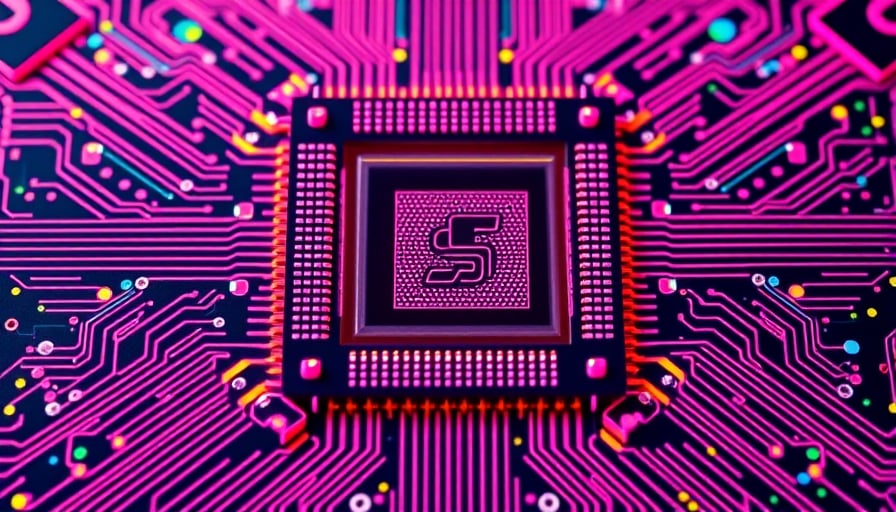Corporate News – Analyst Day Highlights AMD’s Strategic Growth in AI and Data‑Center Markets
On 12 November 2025, Advanced Micro Devices Inc. (AMD) convened an analyst day in New York that underscored its ambitious growth targets. Management outlined a revenue trajectory driven primarily by the expansion of its artificial‑intelligence (AI) GPU portfolio and datacenter CPU offerings. The presentation was met with a notable rally in the company’s share price, which climbed to levels approaching its most recent 52‑week high. Following the event, equity analysts revised their price targets upward, though several noted that much of the upside may have already been priced in by the market.
Semiconductor Node Progression and Manufacturing Advancements
AMD’s growth narrative is tightly coupled with the continued evolution of semiconductor nodes. The company’s latest generation of AI accelerators is built on a 5 nm process, while its forthcoming 3 nm platform—partnered with a leading foundry—promises a 20–25 % increase in transistor density and a corresponding reduction in power consumption. This progression aligns with industry‑wide momentum toward sub‑3 nm nodes, where the integration of high‑κ/metal‑gate stacks and directed self‑assembly (DSA) lithography has become critical for maintaining performance gains.
Yield Optimization Strategies
Achieving high yields at these advanced nodes is technically demanding. AMD has invested in process‑by‑process (PbP) calibration tools and real‑time defect mapping to reduce yield‑threatening variability. The adoption of in‑situ metrology, such as machine‑vision‑based defect inspection and statistical process control dashboards, enables rapid detection of lithographic hotspots and etch anomalies. Moreover, the company’s “Yield‑First” design methodology, which incorporates mask‑level modeling of stochastic dopant fluctuations, helps mitigate variability before it reaches the wafer‑level.
Capital Equipment Cycles and Foundry Capacity Utilization
The transition to 3 nm and beyond necessitates capital equipment cycles that extend over multiple years. Foundries are deploying extreme ultraviolet (EUV) lithography tools with 13.5 nm light wavelengths, and the integration of phase‑shifting masks (PSMs) is essential for achieving the sub‑10 nm critical dimension (CD) targets. AMD’s partner foundries have announced that their 3 nm capacity utilization is currently at 70 % of projected throughput, indicating that there is still room for additional orders before the manufacturing lines reach full capacity.
Capital expenditure (CapEx) for this equipment cycle is substantial: a single EUV scanner can cost upwards of $400 million, and the associated infrastructure (cleanroom upgrades, metrology suites, and power delivery systems) can add another $200 million to a fab’s footprint. These investments underscore why many semiconductor players are opting for a shared‑foundry model, where design houses like AMD can benefit from advanced nodes without the burden of building their own fabs.
Design Complexity versus Manufacturing Capabilities
AMD’s roadmap features increasingly sophisticated designs: AI GPUs with heterogeneous compute clusters, high‑bandwidth memory (HBM) stacks, and silicon‑on‑insulator (SOI) substrates. The complexity of these designs is matched by the capabilities of modern lithography and deposition tools. For instance, the implementation of 3D‑IC interconnects relies on through‑silicon vias (TSVs) fabricated using copper pillar and dielectric filling processes, which demand nanometer‑scale alignment precision.
The interplay between design and manufacturing is evident in the need for design‑for‑manufacturability (DFM) techniques. AMD’s use of design‑time process‑corner analysis ensures that transistor threshold voltages (Vth) are tuned to account for process variability, while logic synthesis flows incorporate “shrink‑safe” macros that preserve performance across process corners.
Broader Technological Impacts
Advances in semiconductor technology enable a host of downstream innovations:
- Artificial Intelligence: Higher transistor densities translate into more tensor cores per chip, reducing inference latency and energy consumption for machine‑learning workloads.
- Edge Computing: 3 nm CPUs with power‑efficient cores facilitate low‑power, high‑throughput edge devices that can handle real‑time analytics.
- High‑Performance Computing (HPC): AMD’s multi‑core CPU designs, paired with advanced interconnects, accelerate scientific simulations and large‑scale data processing.
- Internet of Things (IoT): Small‑form‑factor AI accelerators empower IoT gateways to perform on‑device intelligence, enhancing privacy and reducing latency.
By pushing the limits of node progression and yield optimization, semiconductor manufacturers are not merely delivering faster chips; they are expanding the envelope of what can be achieved in AI, data‑center, and consumer electronics ecosystems. AMD’s recent analyst day illustrates the confidence investors and industry participants place in the company’s ability to navigate these technical challenges while capitalizing on the broader semiconductor evolution.




